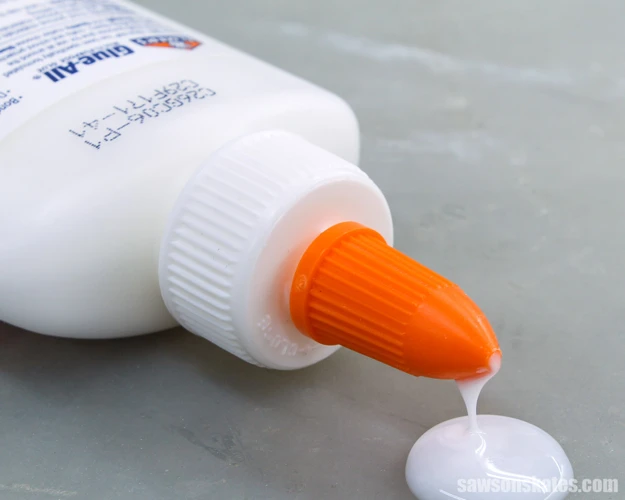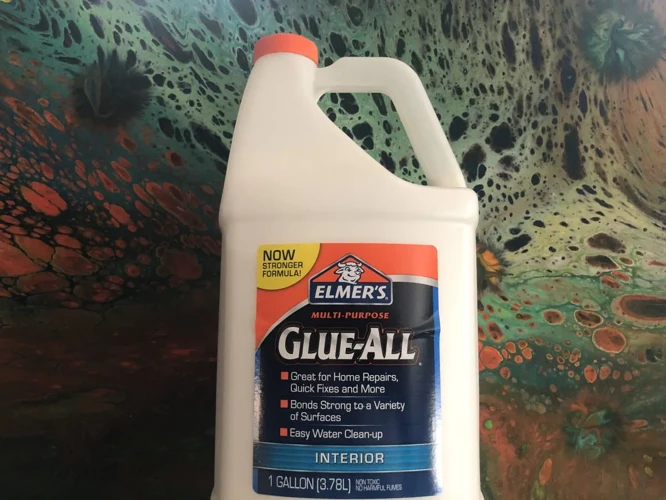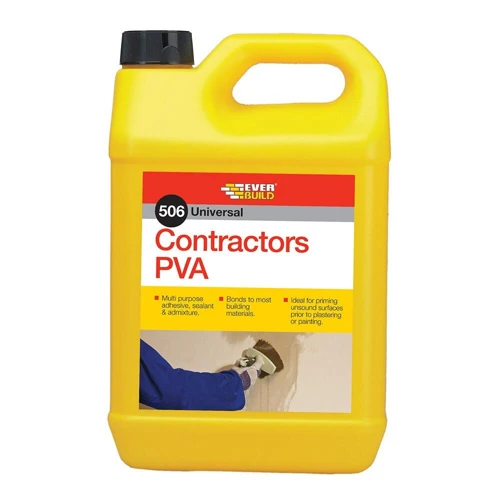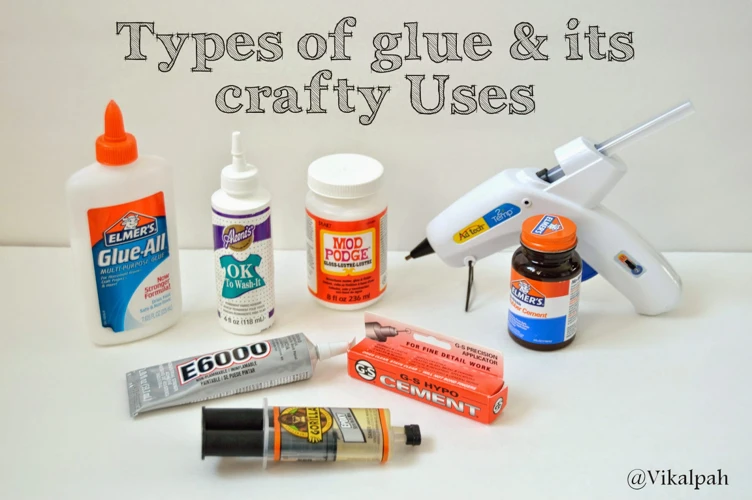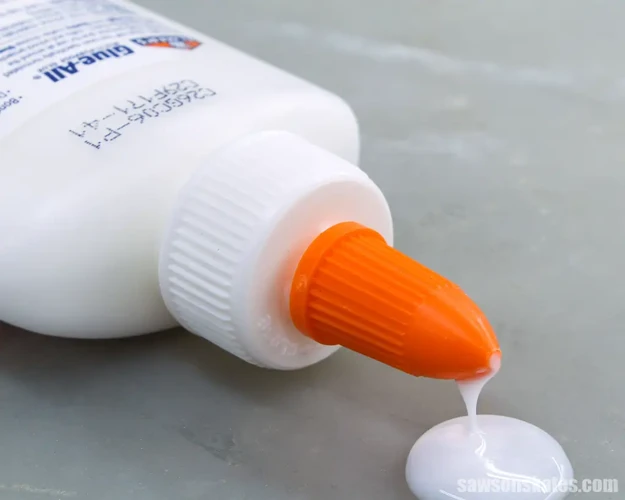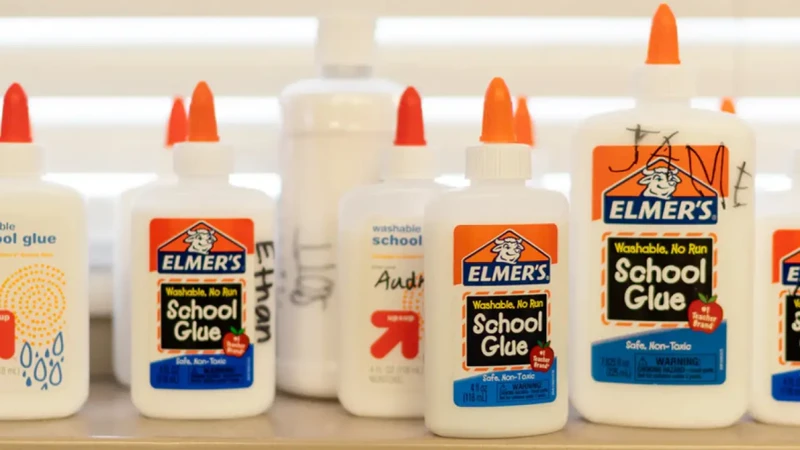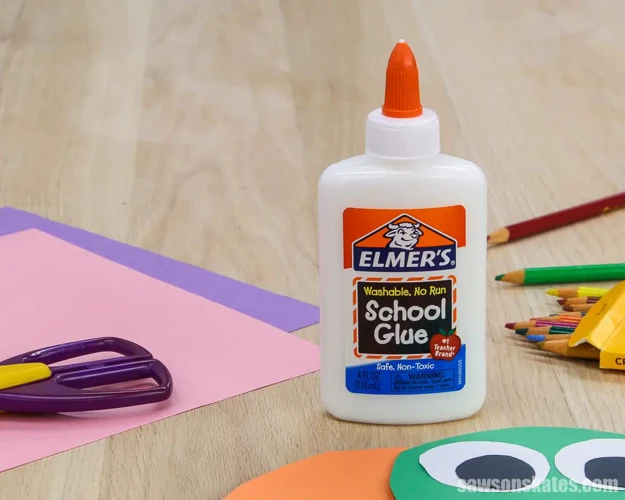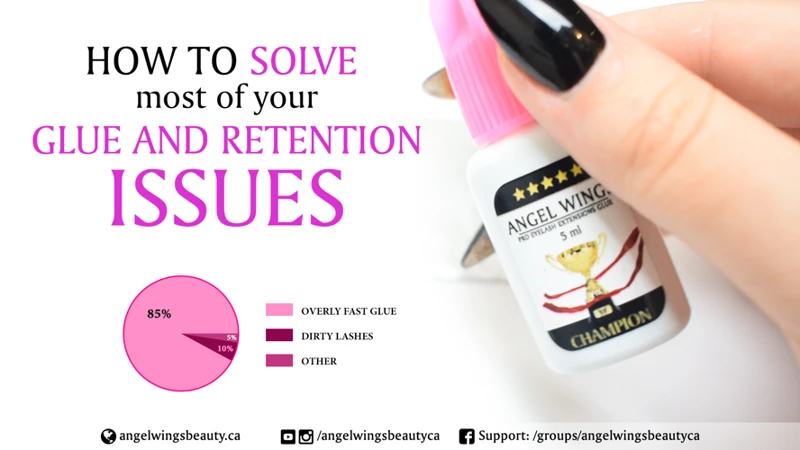Have you ever found yourself in a situation where you need to seal a surface, but you’re not sure which adhesive to use? Look no further than PVA glue! PVA glue, also known as white glue or school glue, is a versatile adhesive that can also be used as a sealant. If you’re a beginner to using PVA glue as a sealant, this comprehensive guide will provide you with step-by-step instructions on how to use it effectively. From its properties to its application techniques, this article covers everything you need to know about using PVA glue as a sealant. So, let’s dive in and get started!
What is PVA Glue?
PVA glue, also known as polyvinyl acetate, is a type of adhesive that has been widely used for several decades. This versatile glue has many properties that make it ideal for a range of applications, from woodworking and crafts to construction and DIY projects. Its unique composition allows it to bond strongly to a variety of materials, making it a popular choice for many users. To learn more about the specific properties of PVA glue and how it can be used as a sealant, read on.
Properties of PVA Glue
PVA (Polyvinyl Acetate) glue, also known as white glue or school glue, is a widely used adhesive that has several noteworthy properties that make it highly useful for various applications. Here are some of the key properties of PVA glue:
| Property | Description |
|---|---|
| Dries Clear | PVA glue dries clear, which makes it an ideal choice for use in arts and crafts projects that require an invisible bond. |
| Low-to-No Odor | Compared to other types of adhesives, PVA glue has a low-to-no odor, which makes it safe to use in enclosed spaces. |
| Water-Soluble | PVA glue is water-soluble, which means that it can be easily cleaned up with water. |
| Non-Toxic | Most PVA glues are non-toxic and safe for use by children and adults alike. |
| Flexible | Once dry, PVA glue remains flexible and can withstand small amounts of movement or flexing. |
| Fast Drying | Depending on the thickness of the layer applied, PVA glue dries quite quickly, typically within 30-60 minutes. |
These properties make PVA glue desirable for use in various applications ranging from arts and crafts to carpentry and woodworking.
Note: If you ever find yourself needing a large amount of PVA glue for a project, you might want to visit how much slime does a gallon of glue make? to learn how much glue you need to achieve your desired outcome.
When to Use PVA Glue as a Sealant
When should you consider using PVA glue as a sealant? PVA glue is a versatile adhesive that is commonly used for various crafting purposes. It is also an effective sealant for specific surfaces. In this section, we will discuss different situations where using PVA glue as a sealant is ideal. We will also highlight the possible benefits and drawbacks of using PVA glue to seal surfaces. For a more in-depth understanding of PVA glue, we recommend checking out our previous section on its properties. If you’re interested in making other types of glue, such as bone glue, or if you want to know how to make Elmer’s glue dry faster, check out our reference section for more information.
Benefits of using PVA glue as a sealant
Using PVA glue as a sealant has several benefits. Here are some of them:
| Benefits of Using PVA Glue as a Sealant |
|---|
| 1. Water-resistant: PVA glue is highly water-resistant when it dries. This makes it an ideal choice for sealing surfaces that are going to be exposed to moisture. |
| 2. Dries clear: The glue dries clear, which means it won’t affect the appearance of the sealed surface. |
| 3. Easy to use: PVA glue is easy to apply and dries quickly, so you don’t have to worry about spending hours waiting for it to dry. |
| 4. Non-toxic: The glue is non-toxic, which means it can be used safely around children and pets without posing any health risks. |
| 5. Cost-effective: PVA glue is an affordable option for sealing surfaces, and it can be found in most hardware stores. |
PVA glue can be used as a sealant in a variety of applications, from woodworking to arts and crafts. However, it’s important to note that there are also drawbacks to using PVA glue as a sealant. These include its limited UV resistance and lower durability compared to other sealants.
Potential drawbacks of using PVA glue as a sealant
Potential drawbacks of using PVA glue as a sealant
While PVA glue is a popular choice for sealant due to its affordability and ease of use, there are some potential drawbacks to keep in mind.
One major issue with PVA glue as a sealant is that it may not hold up well in areas with high moisture or humidity levels. PVA glue is water-soluble, so it may eventually break down and lose its effectiveness in environments that are too damp or humid.
Another issue with using PVA glue as a sealant is that it may not be as strong or durable as other sealant options. While PVA glue can provide a protective layer, it may not hold up as well against wear and tear or physical damage as other types of sealants.
It’s also worth noting that PVA glue may not be suitable for all surfaces. For example, it may not adhere well to certain types of plastics or metals, which could lead to issues with the sealant coming loose over time.
While PVA glue can be a useful and budget-friendly option for sealing certain surfaces, it’s important to be aware of its limitations and potential drawbacks. If you’re working on a project that requires a strong, long-lasting sealant, it may be worth exploring other options as well.
| Potential Drawbacks of Using PVA Glue as a Sealant | Solutions |
|---|---|
| PVA glue may not hold up well in areas with high moisture or humidity levels. | Consider alternative sealant options that are more water-resistant or waterproof. |
| PVA glue may not be as strong or durable as other sealant options. | Choose a sealant that is better suited for high-traffic or wear-and-tear areas, or consider applying multiple layers of PVA glue for added durability. |
| PVA glue may not adhere well to certain surfaces. | Test the glue on a small, inconspicuous area before applying it more widely, and consider using a primer or alternative glue for surfaces that don’t adhere well to PVA. |
Sources:
– life-is-feudal-how-to-make-bone-glue/
– how-to-make-elmers-glue-dry-faster/
– what-is-the-mass-of-a-glue-stick/
How to Use PVA Glue as a Sealant
For those new to using PVA glue as a sealant, the process may seem intimidating. However, with the right safety precautions and application techniques, it can be an effective solution for sealing a variety of surfaces. Before beginning, it is important to gather all necessary materials and familiarize oneself with the properties of PVA glue. In this guide, we will provide step-by-step instructions, as well as tips and tricks for using PVA glue as a sealant. Plus, we will share alternative uses for PVA glue beyond just sealing. If you’re ready to get started, let’s dive in! But if you need information on how to make glue thicker, click on the link for step-by-step instructions.
Safety Precautions
When working with any kind of glue, including PVA glue, it is important to take safety precautions to protect yourself and others. Here are some essential safety measures you should take before using PVA glue as a sealant:
- Protective Clothing: Wear protective eyewear and disposable gloves to prevent irritation and skin reactions. Some people may be allergic to PVA glue, so it’s better to stay on the safe side by protecting your skin and eyes.
- Ventilation: Ensure that you’re working in a well-ventilated area to avoid inhaling the fumes from the glue. PVA glue doesn’t give off toxic fumes but can have a strong smell, which can cause eye or nose irritation or dizziness.
- Surfaces and Surroundings: Protect the surface you will be working on by covering it with newspaper or disposable fabric to avoid any damage to the underlying surface from the glue. Clean up any spills immediately to avoid slipping or damage. Avoid working near an open flame or other potential fire hazards.
- Age: PVA glue should be used with adult supervision. Parents and teachers should make sure the glue is not ingested by children as it can cause poisoning.
By taking all these safety measures, you can prevent any unwanted accidents and ensure your safety while working with PVA glue. For more information and helpful tips on PVA glue, check out our guide on How to Make a Fake Tongue Ring without Glue.
Stepwise Guide
Once you have taken the necessary safety precautions, you can start using PVA glue as a sealant. This stepwise guide will help you apply PVA glue as a sealant with ease:
| Step 1: | Clean the surface you wish to seal. Make sure it is free of dirt and debris as any impurities can interfere with the adhesive properties of the glue. |
| Step 2: | Apply a thin layer of PVA glue with a brush or roller. Make sure to work in small sections rather than applying too much glue all at once. |
| Step 3: | Allow the glue to dry completely before applying another layer. The drying time will depend on the thickness of the glue and the type of surface being sealed. However, as a general rule, it takes around 1-2 hours for the first layer to dry. |
| Step 4: | Apply additional layers of PVA glue as necessary, until you reach the desired thickness. Remember to allow each layer to dry completely before applying the next. |
| Step 5: | Once you are satisfied with the thickness, allow the glue to cure for about 24 hours to achieve maximum hold. Do not disturb or touch the surface during this time. |
Following this stepwise guide will ensure that you apply PVA glue as a sealant accurately and carefully. However, keep in mind that the drying time may vary depending on the humidity and temperature in the room, as well as the type of surface being sealed. If you are unsure about the appropriate drying time, it is a good idea to consult the manufacturer’s instructions or test the glue on a small, inconspicuous area before sealing the entire surface.
If you need to make the glue thicker for a specific application, you can do so by adding a small amount of cornstarch or flour to the glue. This will thicken the glue, making it easier to apply to vertical surfaces. For more information, check out our article on how to make glue thicker.
Now that you know how to use PVA glue as a sealant, it’s time to learn about the different surfaces you can seal with it. Check out our next section on types of surfaces to seal with PVA glue for more information.
Types of Surfaces to Seal with PVA Glue
When it comes to sealing different types of surfaces with PVA glue, the process varies slightly depending on the material. It is important to take into account the type of surface to be sealed, such as wood, paper, or fabric, in order to achieve the best results. In this section, we will discuss how to prepare various surfaces for sealing with PVA glue and the most effective application techniques for each material. Whether you’re working on an arts and crafts project or a woodworking project, understanding the proper way to use PVA glue as a sealant on different surfaces will help you achieve a professional finish. So, let’s dive in and explore the types of surfaces that can be sealed with PVA glue. For more information on other uses of PVA glue, check out our guides on how to glue clay and how to draw a glue bottle.
Preparation of surfaces
Before applying PVA glue as a sealant, it’s essential to prepare the surface that needs to be sealed. Proper preparation ensures that the PVA glue adheres well, creating a durable seal. The following steps can be followed when preparing surfaces to be sealed with PVA glue:
Clean the surface: Ensure that the surface to be sealed is clean and free from dirt, dust, and debris. Use a damp cloth to wipe the surface and let it dry completely.
Remove any old sealant: If there is an old sealant present on the surface, it should be removed before applying PVA glue. Old sealants can prevent proper adhesion, leading to a weak seal. A scraper or putty knife can be used to remove the old sealant, taking care not to damage the surface.
Fill any gaps: Before sealing, any gaps or cracks should be filled. Use a suitable filler to fill any gaps or cracks and let it dry completely.
Sand the surface: Use sandpaper to roughen the surface slightly, allowing better adhesion of the PVA glue.
Apply a primer: In some cases, it may be necessary to apply a primer to the surface before sealing with PVA glue. A primer enhances adhesion and improves the durability of the seal. Follow the manufacturer’s instructions on the primer’s application, and ensure that it is completely dry before applying PVA glue.
These preparation steps ensure that the surface is ready to receive the PVA glue sealant, resulting in a strong and durable seal. It’s essential to follow these steps before sealing surfaces with PVA glue to ensure that the sealant adheres correctly and doesn’t peel off.
For more information on glues, check out our articles on sticking paper on the wall without glue and making dry glue wet again.
Application Techniques
When it comes to using PVA glue as a sealant, the application technique is crucial for achieving a strong and reliable seal. Here are some tips for applying PVA glue effectively:
- Prepare the surface: Make sure the surface you want to seal is clean and dry before applying PVA glue. Remove any dust, debris, or old sealant that may interfere with adhesion.
- Apply the PVA glue: Use a brush, roller, or sponge to apply a thin layer of PVA glue onto the surface. Make sure to spread the glue evenly and avoid creating thick or uneven patches, as this may affect the drying time and adhesion.
- Allow time to dry: Depending on the humidity and temperature conditions, PVA glue can take anywhere from 30 minutes to 24 hours to dry completely. It’s important to allow enough time for the glue to cure before testing the seal or applying a second coat.
- Apply a second coat: If necessary, apply a second coat of PVA glue to strengthen the seal. Make sure to let each layer dry completely before applying the next one.
- Test the seal: Once the PVA glue is completely dried, test the seal by applying pressure or running a finger along the sealed area. The seal should be strong and durable, with no gaps or bubbles.
Remember to follow safety precautions when using PVA glue as a sealant, and always use the appropriate techniques and tools for the job. With the right application technique, PVA glue can provide a reliable and long-lasting seal for a variety of surfaces and projects.
Alternative Uses of PVA Glue
Aside from its common use as a sealant, PVA glue has a variety of alternative uses that you may not have considered before. From arts and crafts projects to woodworking endeavors, PVA glue can be a versatile addition to your DIY toolkit. Let’s explore some of the creative ways you can use PVA glue in your projects.
Arts and Crafts projects
PVA glue is a versatile adhesive that can be used in a variety of arts and crafts projects. Its clear, colorless appearance makes it ideal for use with materials such as paper, cardstock, and other porous surfaces. Additionally, PVA glue is easy to work with and dries quickly, making it a popular choice among artists and crafters alike.
Table:
| Types of Arts and Crafts Projects | Benefits of Using PVA Glue |
|---|---|
| Scrapbooking | PVA glue is perfect for attaching photos and embellishments to scrapbook pages. It dries clear and won’t yellow over time, ensuring your memories stay intact. |
| Paper Crafts | Whether you’re creating origami, making paper mache projects, or constructing a paper collage, PVA glue is an excellent choice. It adheres well to paper and dries quickly without warping or wrinkling the material. |
| Fabric Crafts | For projects that involve attaching fabric to other materials, PVA glue is an excellent choice. It can be used to hem fabric edges or attach fabric to wood, metal, or plastic surfaces. Plus, it dries clear and won’t leave any visible residue. |
| DIY Home Decor | From decorating picture frames to creating mixed media artwork, PVA glue is an essential tool for anyone who enjoys making their own home decor. It can be used to glue a variety of materials, including paper, fabric, and wood. |
When working with PVA glue for arts and crafts projects, it’s important to use the right amount and apply it evenly to prevent clumping or lumps. Additionally, it’s a good idea to let the glue dry completely before moving on to the next step, as this will ensure that your project stays securely assembled.
Tips:
- Use a brush or sponge to apply the glue evenly and avoid clumps.
- Don’t apply too much glue, as this can cause warping or buckling in paper or fabric.
- Allow ample drying time before handling your project, especially if it will be exposed to heat or moisture.
PVA glue is an affordable and versatile adhesive that has gained popularity among artists, crafters, and DIY enthusiasts. Its clear and colorless appearance make it ideal for use in a variety of arts and crafts projects, especially those involving paper, fabric, and other porous materials. With proper application techniques and drying time, PVA glue can help you create stunning and long-lasting projects that you’ll be proud to display.
Woodworking projects
PVA glue is a popular adhesive that is commonly used in woodworking as a sealant. It is ideal for use on porous surfaces, such as wood, where it can penetrate and create a strong bond with the material. Woodworking projects that involve furniture making, cabinetry, flooring, and general carpentry can all benefit from the use of PVA glue as a sealant.
One of the main advantages of using PVA glue in woodworking is that it dries clear, making it ideal for use on natural or stained wood surfaces. It is also water-resistant, making it suitable for use in areas where moisture may be present, such as in bathrooms and kitchens. PVA glue has a low odor and is easy to work with, making it preferred by many woodworkers.
Table: Woodworking Projects Using PVA Glue
| Project Type | Surface Type | Application Technique |
|---|---|---|
| Furniture making | Wooden joints, veneers, and laminates | Apply glue to one surface, press the pieces together and clamp until dry |
| Cabinetry | Wooden joints, veneers, and laminates | Apply glue to one surface, press the pieces together and clamp until dry |
| Flooring | Wooden floorboards and subflooring | Apply glue to the subfloor, lay the floorboards, and hammer nails to secure them |
| Carpentry | Wooden joints, veneers, and laminates | Apply glue to one surface, press the pieces together and clamp until dry |
When sealing wood surfaces with PVA glue, it is important to prepare the surface properly by sanding it and removing any dust and debris. The glue should then be applied evenly to the surface using a brush or roller, and excess glue should be wiped away using a damp cloth. Once the glue has been applied, the surfaces should be clamped together until the glue has fully cured.
It is important to note that PVA glue should only be used on porous surfaces, as it will not adhere properly to non-porous surfaces such as metal or plastic. Additionally, PVA glue may not be suitable for use in areas where it will be exposed to extreme heat or cold, as it may lose its adhesive properties.
PVA glue is an excellent option for sealing wood surfaces in woodworking projects. Its water-resistant properties and ease of use make it a popular choice among woodworkers, and it can be used for a range of applications, from furniture making to cabinetry and carpentry. With proper surface preparation and application techniques, PVA glue can help to create strong and long-lasting bonds between wood surfaces.
Tips for Using PVA Glue as a Sealant
Using PVA glue as a sealant can be a little tricky, especially for those who are new to the process. To help make the process a little easier, we have put together the following tips:
1. Apply the glue evenly: Make sure you are applying the glue evenly, either with a brush or a roller. Any gaps or inconsistencies in the glue layer can lead to weak spots in the sealant.
2. Use enough glue: Ensure you are using enough glue for your project. If you don’t apply enough, the sealant will not be as effective, and you may need to go back and reapply.
3. Follow the recommended drying time: PVA glue needs time to dry properly for it to work as an effective sealant. Stick to the recommended drying time on the product label and avoid using the sealed surface until it has fully dried.
4. Avoid excess moisture: PVA glue is sensitive to moisture, so be careful not to expose it to excess water or moisture while it is drying. Keep the room well-ventilated and dry.
5. Sand the surface: If you’re using PVA glue to seal a surface that will be painted or stained later, it’s a good idea to sand the surface first. This will help the surface be more adhesive to the glue and result in a stronger seal.
6. Test it first: Before using PVA glue as a sealant on a large-scale project, it’s a good idea to test it on a small, inconspicuous area first. This will let you see how it performs and if there are any potential issues you need to be aware of.
7. Store it correctly: PVA glue has a relatively short shelf life, so make sure you store it correctly to extend its lifespan. Keep it in a cool, dry place, away from direct sunlight.
By keeping these tips in mind, you’ll be well on your way to effectively using PVA glue as a sealant for all your projects.
Mistakes to Avoid when Using PVA Glue as a Sealant
Using PVA glue as a sealant has numerous benefits, but there are also a few pitfalls to watch out for. Below are some common mistakes to avoid when using PVA glue as a sealant.
Applying too thick of a coat
Applying too much PVA glue can lead to problems down the road. A thick coat of PVA glue may take longer to dry and may not properly adhere to the surface. Additionally, a thick layer may crack or peel over time, compromising the seal. To avoid this mistake, apply PVA glue in thin, even layers, allowing each layer to dry completely before adding another.
Not giving enough drying time
While PVA glue dries relatively quickly, it is important to allow sufficient drying time between coats. If the glue is not fully dry before another layer is added, it may not adhere properly or may cause the underlying layer to lift or buckle. Be patient and allow each layer to dry completely before adding another.
Not properly cleaning the surface
Before applying PVA glue as a sealant, it is essential to clean the surface thoroughly. Any dirt, dust, or debris left on the surface can lead to adhesion problems and compromise the seal. Use a damp cloth or sponge to clean the surface, then allow it to dry completely before applying the glue.
Using poor-quality PVA glue
The quality of the PVA glue you use as a sealant can make a big difference in the final results. Using a cheap, low-quality glue may save money upfront, but it may not provide the necessary durability or adhesion for a successful seal. It is best to invest in a high-quality PVA glue specifically designed for use as a sealant.
Not using the right type of PVA glue
PVA glue comes in various types, each with different properties and intended uses. Some are designed for general woodworking, while others are specifically formulated for use as a sealant. Be sure to choose the correct type of PVA glue for your project to ensure the best results.
Not sanding the surface properly
To ensure that the PVA glue adheres properly to the surface, it is essential to sand it beforehand. Sanding creates a rough, porous surface that the glue can adhere to effectively. Failure to sand the surface can lead to poor adhesion and a compromised seal.
By avoiding these common mistakes, you can ensure that your PVA glue sealant provides durable, long-lasting protection to your surfaces. Take the time to properly prepare the surface, use the right materials, and apply the glue correctly, and you will be well on your way to success.
How to Remove PVA Glue
If you’ve accidentally spilled PVA glue on a surface or need to remove it for some reason, don’t worry – it is a water-based glue and can be easily removed. However, it is important to follow the proper steps in order to avoid damaging the surface beneath it. In this section, we will explore the different techniques for removing PVA glue from various surfaces. Whether it’s a craft project gone awry or a DIY mishap, these tips will help you effectively remove PVA glue without leaving any residue.
Surface Preparation
Before attempting to remove PVA glue from a surface, it is important to prepare the area properly to avoid further damage. Here are the steps to follow for surface preparation:
| Step | Action |
|---|---|
| Step 1: | Clean the surface |
| Step 2: | Remove debris and dust from the surface using a soft-bristled brush and a vacuum cleaner |
| Step 3: | Wipe the surface with a clean, damp cloth to remove any remaining debris |
| Step 4: | Dry the surface completely, using a dry cloth or allowing it to air dry for at least 24 hours |
Following these steps will ensure that the surface is ready for the removal process. It is important not to rush through the preparation steps as any remaining debris or moisture could interfere with the effectiveness of the removal process.
Removal Techniques
When it comes to removing PVA glue, there are several techniques you can use depending on the surface it was applied to. Here are a few common removal techniques to consider:
- Scraping: If the glue is thick and has dried up, you can use a scraper to remove the excess glue. Be careful not to scratch the surface.
- Sanding: Sandpaper can be used to sand away dried PVA glue. Use a fine-grit sandpaper to avoid damaging the surface.
- Soaking: Soak the surface in warm water for a period of time to soften the glue, making it easier to remove. Be sure to not oversaturate the surface, as it may cause damage.
- Solvent: In some cases, using a solvent like vinegar or rubbing alcohol can help dissolve the PVA glue. Be sure to test the solvent on a small area before applying it to the entire surface.
It’s important to note that different surfaces will require specific removal techniques, so it’s best to do some research beforehand. Always take safety precautions when using solvents and other chemicals, and be sure to wear protective gear like gloves and goggles. With these techniques, you should be able to effectively remove PVA glue without causing damage to the surface.
FAQs
As you delve into the world of using PVA glue as a sealant, it’s natural to have some questions and concerns. In this section, we’ll answer some of the most commonly asked questions about using PVA glue as a sealant, from whether it can be used on exterior surfaces to how long it takes to dry and cure. Keep reading to put your mind at ease and ensure that you’re using PVA glue as effectively and safely as possible.
Can PVA glue be used on exterior surfaces?
When it comes to using PVA glue as a sealant, a common question that arises is whether it can be used on exterior surfaces. The short answer is that PVA glue is not suitable for use on exterior surfaces. Let’s take a closer look at why.
Properties of PVA Glue
PVA glue is a water-based adhesive that has excellent bonding properties on porous surfaces. It forms a strong, durable bond when it dries and can be sanded or painted over after it cures. However, PVA glue is not waterproof and can break down when exposed to moisture.
Why PVA Glue is not Suitable for Exterior Surfaces
Exterior surfaces are exposed to a wide range of weather conditions, including rain, snow, and sunlight. PVA glue is not designed to withstand these conditions and can break down over time, leading to a loss of adhesion. Additionally, PVA glue can freeze at low temperatures, which can also compromise its bonding strength.
Alternative Sealants for Exterior Surfaces
If you need to seal exterior surfaces, there are several alternative sealants that are better suited to this purpose. Some of the most common options include:
| Sealant Type | Advantages | Disadvantages |
|---|---|---|
| Acrylic Sealant | Weather-resistant Paintable Easily applied with a caulking gun |
May shrink over time Not as durable as other options |
| Polyurethane Sealant | Extremely durable Waterproof Can be painted over |
More difficult to apply than other options May require special equipment |
| Silicone Sealant | Flexible Waterproof Resistant to UV rays |
Not paintable May yellow over time May require a solvent for removal |
It’s important to choose a sealant that is specifically designed for exterior use and to follow the manufacturer’s instructions carefully to ensure proper adhesion and durability.
While PVA glue is an excellent adhesive for interior projects, it should not be used on exterior surfaces. Instead, choose a sealant that is specifically designed for this purpose, such as an acrylic, polyurethane, or silicone sealant.
Can surfaces sealed with PVA glue be painted over?
One of the most common questions asked about using PVA glue as a sealant is whether the surfaces sealed with it can be painted over. The good news is that the answer is mostly yes. Let’s take a look at the factors that can affect painting over PVA glue sealed surfaces.
Surface type: The type of surface that has been sealed with PVA glue can determine whether or not it can be painted over. For example, if you have used PVA glue to seal a porous surface such as wood or paper, it should be fine to paint over it. However, if you have used it to seal a non-porous surface such as glass or metal, the paint may not adhere to it as well.
Type of paint: The type of paint you plan to use on the sealed surface can also make a difference. It is recommended to use a water-based paint if you have sealed the surface with PVA glue, as it will bond better to the glue. If you plan to use oil-based paint, you may need to sand the surface to help the paint adhere better.
Quality of sealing: If the surface has been properly sealed with PVA glue, it should be easy to paint over it. However, if the sealing job was done poorly or using an inferior PVA glue, the paint may not adhere well. It is important to ensure that the surface has been completely covered and that the PVA glue has dried properly before attempting to paint over it.
Table:
| Factor | Effect on Painting Over Sealed Surface |
|---|---|
| Surface type | Can affect how well the paint adheres |
| Type of paint | Water-based paint is recommended |
| Quality of sealing | Poor sealing or low-quality glue can affect the paint adhesion |
Surfaces sealed with PVA glue can generally be painted over, but the type of surface and paint used, as well as the quality of the sealing job, can all affect how well the paint adheres. Taking these factors into consideration and ensuring proper preparation can help you achieve a successful outcome when painting over a PVA glue sealed surface.
How long does PVA glue take to dry and cure?
The drying and curing time for PVA glue can vary depending on a few factors, such as the temperature and humidity of the environment, the amount of glue used, and the type of surface it is applied to. Generally, PVA glue dries to the touch in about 30 minutes to an hour, but it is important to note that this is not the same as being fully cured.
Full curing time for PVA glue can take up to 24 hours or longer , depending on the factors mentioned above. It is important to avoid disturbing the glued surface during this time as it can compromise the strength of the bond. If the surface is load-bearing or will be subject to stress, it is best to wait at least 24 hours before using it.
Another factor to consider is the thickness of the glue layer. Thicker layers will take longer to dry and cure compared to thinner layers. It is important to apply PVA glue in thin, even layers to avoid prolonging the drying and curing time unnecessarily.
In some cases, a PVA glue application may appear dry on the surface but still be wet underneath. It is important to check that the glue has fully cured before assuming it is ready for use. Testing the bond strength gently can help determine if the glue has fully cured.
Overall, be patient and allow enough time for PVA glue to fully dry and cure before using the surface to ensure a strong bond and a successful project.
Troubleshooting Common Issues
Even with proper application, there might be some common issues one might face while using PVA glue as a sealant. Let’s take a look at some of the most frequently encountered problems and how to fix them:
Drying and Curing Time
PVA glue typically dries within 30 minutes to an hour, depending on the thickness applied and humidity levels. It can take 24 hours or more to cure fully. If the glue takes longer to dry than expected, check the moisture level in the working area. High humidity levels may cause the glue to dry slower. Ensure proper ventilation for quick drying. If the glue isn’t curing properly, ensure the applied layer isn’t too thick.
Yellowing
One of the common issues with PVA glue is yellowing over time. This issue is due to exposure to sunlight, air, and dust. To avoid this, use a clear drying PVA glue.
Cracking
Applying too thick a layer of PVA glue can cause cracking and peeling over time. Make sure to apply thin layers and let each layer dry completely before applying the next layer.
Lack of Adhesion
PVA glue might not adhere well to some surfaces, such as metal and plastic. To improve its adhesive qualities, prepare surfaces with light sanding or priming prior to the application of PVA glue.
Staining
PVA glue can sometimes leave visible stains after drying, especially on porous surfaces. Wipe off any excess glue before it dries using a damp cloth, and apply a thinner layer of glue to avoid staining.
Low Resistance to Water and Heat
PVA glue is not water-resistant or heat-resistant and may soften or dissolve in contact with water or heat. Avoid using PVA glue on surfaces that will be exposed to direct sunlight or heat, such as kitchen countertops or hot tub enclosures.
By considering these common problems and their solutions, you can use PVA glue as a sealant effectively, ensuring that your projects stand the test of time.
Conclusion
In conclusion, PVA glue is an excellent sealant option for various surfaces, provided it is used correctly. Its properties such as water resistance, fast-drying, and affordability make it a popular choice. You can use it for DIY projects or sealing purposes to prevent moisture from penetrating surfaces. However, understanding its limitations and how to use it safely is essential to maximize its benefits.
To use PVA glue as a sealant, remember to clean and prepare the surface appropriately, use the right technique, and allow enough time for it to dry and cure. Always keep safety precautions in mind when using PVA glue to avoid accidents.
While PVA glue works well for most sealing applications, it may not be the best option for exterior use or in high-moisture areas. It is also essential to note that PVA glue may not bond correctly with certain materials such as metal, plastic, or oily woods.
Overall, PVA glue is a versatile and useful adhesive that can be used in more than one way. Whether for sealing surfaces, arts and crafts projects, or woodworking, PVA glue provides a strong bond and dries clear to give you a professional finish. With the tips and tricks shared in this article, you can use PVA glue as a sealant with confidence, knowing you have the knowledge needed to achieve the best results.
References
Including references in your article is an important step to ensure the accuracy and reliability of the information presented. When writing your article, it’s important to cite sources that are credible, reputable, and relevant to the topic at hand. Using HTML tags to highlight your references can help readers easily locate the sources you used.
One common way to gather references is by conducting thorough research on the topic. This can involve reading books, journal articles, and online resources from credible sources such as academic journals, government websites, and industry publications. Another way to gather references is by interviewing experts in the field or consulting with professionals who have experience using PVA glue as a sealant.
When citing your sources, it’s important to follow a consistent citation style such as APA or MLA. This will ensure that your references are formatted correctly and easy to read. Some common elements of a reference citation include the author’s name, date of publication, title of the source, name of the publisher, and the page number(s) or URL of the source.
Including references in your article is important to establish the credibility and reliability of your content. Using HTML tags to highlight your references can make it easier for readers to locate and explore the sources you used.
Frequently Asked Questions
Can PVA glue be used as a waterproof sealant?
PVA glue is not completely waterproof and can degrade over time when exposed to moisture. However, it can be used as a temporary sealant for small gaps and cracks.
Is PVA glue suitable for sealing wood?
Yes, PVA glue is commonly used as a wood sealant because it dries clear, can fill gaps and provides a strong bond.
How many coats of PVA glue should I apply for adequate sealing?
It is recommended to apply at least two or more coats of PVA glue when using it as a sealant. The number of coats required can vary based on the surface and the extent of the sealing required.
Can PVA glue be used on metal surfaces?
While PVA glue can be used on some metal surfaces, it is not recommended for high-stress applications on metal that will be exposed to constant wear and tear.
What is the drying time for PVA glue?
The drying time of PVA glue varies based on the surface and the thickness of the glue application, but typically takes between 30 minutes to an hour to dry.
Can PVA glue be sanded after it dries?
Yes, PVA glue can be sanded once it has fully dried. Sanding can help to smooth out any bumps or imperfections left from the glue application.
Is PVA glue toxic?
No, PVA glue is generally considered to be non-toxic and safe to use. However, it is recommended to avoid ingestion and prolonged skin contact.
What surfaces should I avoid using PVA glue on?
PVA glue is not recommended for use on surfaces that will be exposed to frequent moisture or extreme temperatures, such as outdoor surfaces or items that go in the dishwasher.
Can PVA glue be used on plastic surfaces?
PVA glue may not be suitable for all types of plastic surfaces. It is best to test on a small, inconspicuous area before applying to the entire surface to ensure it will not damage the plastic.
What is the shelf life of PVA glue?
The shelf life of PVA glue can vary between brands, but it generally lasts for several years if stored properly in a cool and dry place.
